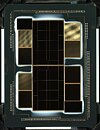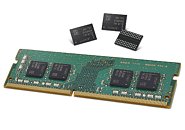
SK hynix Reports 2022 and Fourth Quarter Financial Results
SK hynix Inc. (or "the company") reported today financial results for 2022 ended on December 31. The company recorded revenues of 44.648 trillion won, an operating profit of 7.007 trillion won and a net income of 2.439 trillion won. Operating and net profit margin for the full year was 16% and 5%, respectively. "Revenues continued to grow last year, but the operating profit decreased compared with a year earlier as the industry entered into a downturn from the second half," the company said. "With uncertainties still lingering, we will continue to reduce investments and costs, while trying to minimize the impact of the downturn by prioritizing markets with high growth potential."
In 2022, SK hynix increased high-capacity DRAM shipments for server/PC markets, while boosting sales of DDR5 and HBM - of which products that the company has a solid market leadership - to customers in the growing markets of AI, Big Data, and cloud computing. Particularly, revenues for the data center SSD more than quadrupled compared with a year earlier.
In 2022, SK hynix increased high-capacity DRAM shipments for server/PC markets, while boosting sales of DDR5 and HBM - of which products that the company has a solid market leadership - to customers in the growing markets of AI, Big Data, and cloud computing. Particularly, revenues for the data center SSD more than quadrupled compared with a year earlier.













































